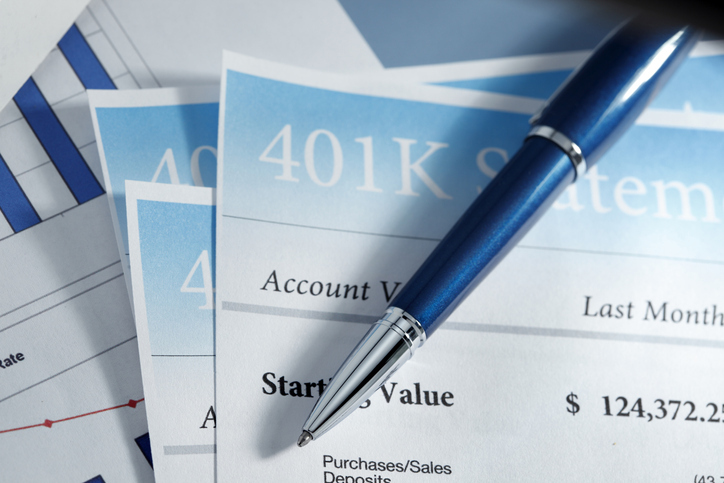Global View Investment Blog
Global View’s 7 Tips for Investing in Volatile Markets
In your parents’ or grandparents’ day, investing may have been a conversation only for the elite and super-wealthy. But today, it’s become a common concern. Why?
Virtually every member of the workforce is aware of the importance of saving for the future and taking care of their own personal nest egg. While the importance of retirement investing isn’t new, the last few generations of American workers have seen a major transformation of available retirement vehicles.
Previously, pensions were common for the average professional, where the employer would be primarily responsible for one’s nest egg. Now, only around 20 percent or less of private employees have access to a pension, requiring working individuals to manage their own retirement accounts typically through a 401(k). This can be particularly difficult if markets are choppy and unpredictable.
Effective management of your employer’s plan investments is critical to the health of your retirement. The SC investment advisors at Global View have compiled the following 7 tips to manage your retirement investments during volatile markets – and eliminate the need for luck or chance.
Have investment questions? Schedule a no-obligation conversation with the team at Global View.
1. Know When to Act, And When to Do Nothing
Often, taking action on your investments too hastily or too often can cause problems. But sticking your head in the sand and assuming everything will work out just fine is not a wise strategy either. A 401(k) is a flexible account and can be altered during every pay cycle, so you can easily make adjustments over time.
Investors of any experience level can benefit by talking with a financial advisor and reviewing their financial plan first. Having educated, experienced, unbiased and fiduciary advice can make your investments choices much easier.
2. Establish or Review Your Goals
Whether you’re building a house, starting a new diet or constructing your own investment portfolio, your first step should be to make a plan. Your portfolio’s blueprint is your unique mix of financial goals, needs, risk tolerance and many other factors.
Are you looking to maximize growth to reach a certain dollar amount in your accounts? Then you may need an aggressive portfolio that is mostly made of stocks. Would you prefer to prioritize safety in your investments and make growth take a back seat? Then a conservative or moderately conservative approach may be best.
Before you act, think about what your goals are for your investments. Then go ahead and make changes if needed. There are a number of ways to adjust your 401(k), especially when markets are volatile. Double-checking your retirement date is a great place to start.
3. Confirm Your Retirement Date
Your time-horizon can affect your investment choices. The longer you have until you’ll actually use the money you’re investing, the more risk (and potential growth) you can likely take in your portfolio, because if markets decline, you will have time to potentially recover. For example, if you are only two years away from your retirement, an aggressive portfolio could put your retirement assets in serious danger.
In 2008, the S&P 500 fell more than 40 percent during the Great Recession. The market eventually recovered to its pre-recession levels – three years later. If you were planning to retire in 2010 and were invested in a fair amount of stocks during the Great Recession, your retirement savings would have been severely affected.
If you are getting nervous about market volatility, think about your retirement date. If you have more than five years until you retire, and you’re currently in a bear market, there’s a chance that the market will recover and you won’t experience any losses in the long run if you can afford to wait. If you decide to change your retirement date, it may require you to reduce the risk level in your portfolio.
4. Double-Check Your Risk Level
Risk tolerance, the amount of risk and volatility you can endure before selling your investments, is another important pillar of your portfolio. If you have high growth needs for your portfolio, but cannot tolerate high volatility, your investments may keep you up a night, defeating their purpose.
Should markets become volatile, it’s important to make sure that you are comfortable with the market fluctuations. To double-check your risk tolerance, ask yourself if you would still maintain your investment plan if you lost 10 to 15 percent in less than three months. If you are unwilling to stomach that much of potential loss (which is perfectly reasonable), then make sure that you have a moderate or moderately conservative portfolio.
At Global View, finding our clients’ true risk tolerance is a crucial part of our process. Our SC investment advisors discuss each client’s needs, goals, concerns and fears before creating a portfolio. Investing is not a one-size-fits-all equation. What may even work for your friend or neighbor may not be the right move for you.
5. Do Your Best to Stay the Course
Once you’ve established what your financial goals and priorities are, when your retirement date is and what your personal risk tolerance is (at least for the time being), you’re in good shape. If volatility occurs, you can lean back on the aforementioned investment parameters you’ve established, and stay the course.
Doing nothing can be a very good option if you have a plan in place. Historically, the stock market has outperformed most other investment types, so continuing to save and sticking to your investment plan can potentially pay off in the long-run.
6. Make Your Retirement Fund Contributions Consistently
Work to maintain your monthly contribution to your 401(k). If markets are a rollercoaster, staying invested will help ensure that you’ll invest at lower prices when markets are down, or at a fairer price if the markets rise.
If you’re not sure what amount is right for you, try to at least save enough to receive your employer’s match. Then you can talk to your financial advisor about increasing your savings percentage every year or two.
7. Talk to Your Advisor
Though it sounds simple, it can be very easy to neglect asking your financial advisor for help on your 401(k) investments. But your 401(k) is a major part of your overall financial picture. The inclusion of your 401(k) investments in your discussion with your financial advisor helps ensure that all of your combined assets are balanced and accounted for. Missing these investments can inadvertently tip the balance of all of your investments to being too aggressive or too conservative.
With 2020 in the books, investors are likely revising their personal and financial lives. The state of the economy, workforce and markets are still uncertain, but you can still move forward prudently and safely.
If you still have questions or feel uneasy amid volatile markets, contact the SC investment advisors at Global View. Our team of fiduciary advisors are here to help!

Written by Joe Hines
Joey's primary focus is working with clients in the goals setting and financial planning process. He has extensive experience is in helping clients facilitate the decision making process, leading them through the implementation of their financial plan and contributing to their peace of mind. This includes helping clients gain an understanding of estate planning, charitable giving, and helping them implement these plans by working closely with estate planning attorneys.
Are you on track for the future you want?
Schedule a free, no-strings-attached portfolio review today.
Talk With Us






